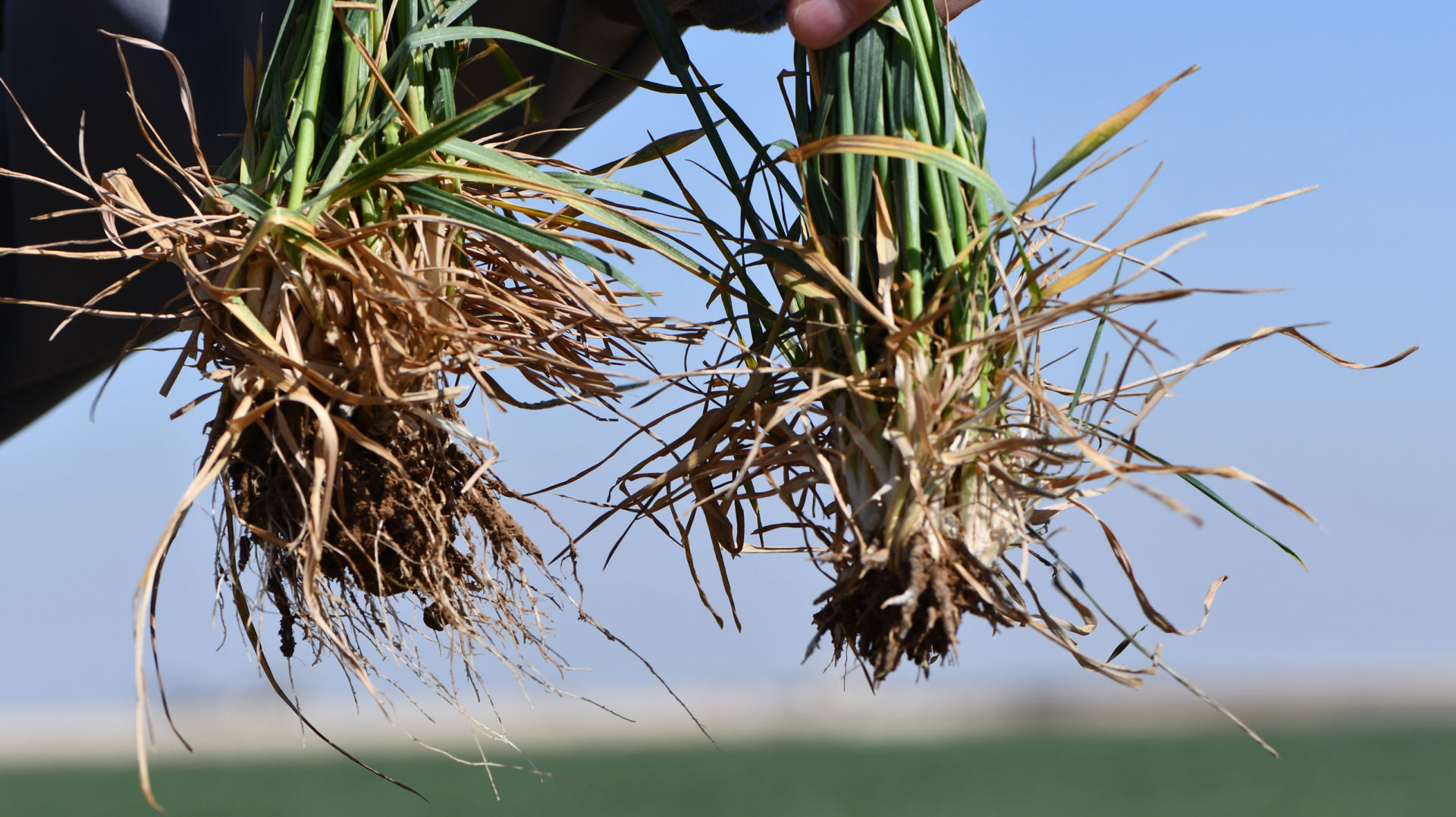The dryland wheat crop is hanging on by a thread, of sorts.
Thread-like roots that developed last fall from the wheat seed have reached deep into the soil profile to tap moisture stored after abundant summer and fall rains, according to a Texas A&M AgriLife Research crop stress physiologist in Amarillo.
The root function of wheat plants is very important under dryland conditions, said Qingwu Xue. Those fall-developed roots are keeping plants alive as they await seasonal rainfall, even under extended drought conditions.
“This season has provided us a very good opportunity to evaluate the drought tolerance among wheat cultivars and dryland wheat management,” Xue said. “If you look at the dryland wheat around Bushland, you will see the plants are still alive, in spite of the fact we have not had any significant rainfall for about six months.”
He said while some plants are showing water stress, many are still looking strong above ground.
“But if you pull the plant up, you will not find many crown roots,” Xue said. “So you might ask, ‘How are these plants surviving with no visible roots?’ Seminal roots that developed from the seeds last fall, that’s pretty much what has kept the dryland wheat plants alive.”
He said the seminal roots can go down 3 to 4 feet deep to tap the soil water reservoir.
“Last summer and fall we received above-average rainfall,” Xue said. “That water is still available down deep and allowing the plants to survive, even under extended long, dry conditions.”
Within the dryland wheat plots and fields, he said a difference can be seen in the root development among cultivars, and that is important in monitoring for drought resistance.
A little rain a few weeks ago provided enough of a boost for some cultivars to show growth of the crown roots once again, and that is also being reflected in the aboveground growth.
“These plants will have a better survival chance and will probably have a better yield under dryland conditions than those on which the crown roots have almost disappeared,” he said.
Xue said one of the AgriLife Research dryland wheat fields received less than an inch of irrigation a week ago and has demonstrated rapid development of crown roots, as well as aboveground growth.
“This just demonstrates the importance of the roots for wheat production under water-limited conditions. They help it survive until the seasonal rains come,” he said. “In the coming weeks, if we get a little bit of rain, it will help the dryland wheat to remain productive.”
Xue said he also noted a planting-date difference on wheat performance under this year’s drought conditions. Fields planted in September used up the stored soil water faster and thus are shorter and not as strong as those planted in November, which are still thriving on stored moisture in the deep profile.
“The difference in this year and previous years,” he said, “is while we have had a very long period of dry conditions on the top soil, we still have plenty of water in the deeper soil profile and this is helping the plants survive.
“If you have a very good soil-water profile to start with, you have a better chance of developing the root system critical to surviving an extended period with no seasonal rains,” Xue said.



